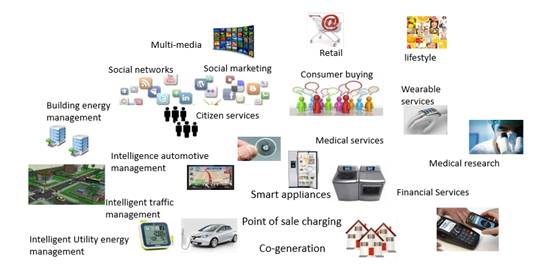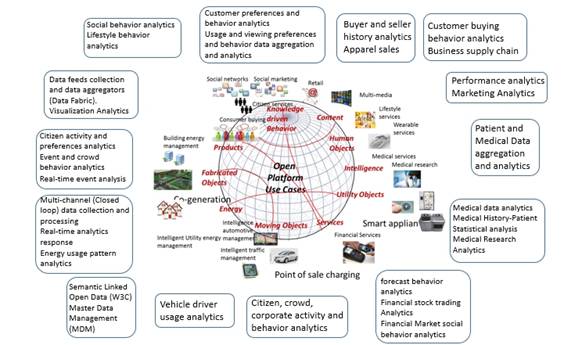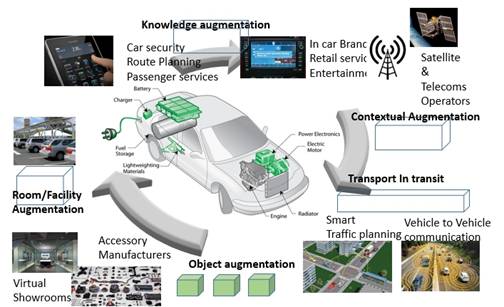The Nexus of Forces in Action – Introduction
The convergence and mutual reinforcement of technical phenomena such as social media, mobility, cloud computing, big data analysis, and the Internet of Things (IoT) is predicted to drive growth in spending on Information Technology (IT) in the years through to 2020. Enterprises will use these technologies in new business models, but they are disruptive of established IT practices.
Gartner uses the term “Nexus of Forces” to describe the convergence and mutual reinforcement of social, mobility, cloud, and information patterns that drive new business scenarios. Gartner says that, although these forces are innovative and disruptive on their own, together they are revolutionizing business and society, disrupting old business models and creating new leaders. Gartner sees the Nexus as the basis of the technology platform of the future (see the Gartner Special Report – The Nexus of Forces: Social, Mobile, Cloud, and Information).
IDC predicts that, from 2013 through 2020, a combination of social cloud, mobile, and big data technologies will drive around 90% of all the growth in the IT market, and uses the term “third platform” to describe this combination. Smart mobile devices will generate more than 50% of this growth (see IDC Predictions 2013: Competing on the Third Platform).
The Open Group has formed the Open Platform 3.0 Forum to help enterprises to use these technologies, by identifying a set of new platform capabilities, and architecting and standardizing an IT platform by which enterprises can reap their business benefits. This will advance The Open Group vision of Boundaryless Information Flow™.
In this White Paper we present business use-cases collected from real industry examples today of the scope of Open Platform 3.0.
Open Platform 3.0 focuses on new and emerging technology trends converging with each other and leading to new business models and system designs. These trends currently include:
- Mobility
- Social networks and social enterprise
- Big data analytics
- Cloud computing
- The Internet of Things (IoT) (networked sensors and controls)
Other technologies may be taken on board as the platform develops.
These convergent forces – united by the growing consumerization of technology and the resulting evolution in user behavior – offer the potential to create new business models and system designs. However, they also pose architectural issues and structural considerations that must be addressed for businesses to benefit.
The Open Platform 3.0 Forum will advance The Open Group vision of Boundaryless Information Flow by helping organizations take advantage of the convergence of these modern technologies.
The use-cases cover a range of industry sectors, business processes, and technologies to demonstrate and investigate the scope and key requirement characteristics of Open Platform 3.0. Some of these sectors, and objects from them that feature in the use-cases, are shown in Figure 1.

Industry Sectors and Industry Objects
Open Platform 3.0 will enable information to flow within and between systems. Some potential flows are illustrated in Figure 2.
In many of the sectors, there are information ecosystems, often involving volumes of data that require big data analytics to process them. This is illustrated in Figure 3.

A particular ecosystem, related to smart cars and intelligent transport, is illustrated in Figure 4.

Smart Cars and Intelligent Transport
Use-Case 15: Mobile Smart Charging and Use-Case 16: Electric Vehicles Ecosystem relate to this ecosystem. (The use-cases are numbered for ease of reference, but are not grouped in any way – for example, by industry sector or by technology. The numbering simply reflects the order in which they were developed.) Other ecosystems are related to other use-cases, which together provide a broad but not exhaustive coverage of the business and technical environment for Open Platform 3.0.
In each use-case, we identify key business and technical functions, and key actors covering both human actors and machine system actors, to explore how technology is being used in Open Platform 3.0 and where existing or new standards for interfaces, schemas, or business activity may be present or required. We also examine the business value of Open Platform 3.0 in each business use-case to support common business case investment themes for this new type of platform.
The use-cases are presented as examples of the use of the emerging technologies and to deepen understanding of the need for and role of Open Platform 3.0. They form an essential basis for the definition and development of the platform.